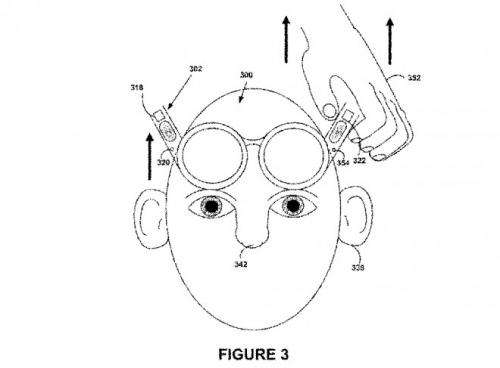July 19, 2012 report
Google Glass theft-protector is granted patent

(Phys.org) -- Google has been granted a patent for a crime-busting technique that would lock down and sound the alarm if anyone stole a Google Glass customer’s $1500 headset. The patent application suggested that its proposed mechanism could “beneficially provide security measures” for the wearable computer. As for the headset this patent idea seeks to protect, the wearable device is anticipated to ship in 2013, opening a new chapter in wearable computing. Relatively ordinary looking glasses with display will become a smartphone for the eyes. Google as of Tuesday is now the recipient of a patent for a mechanism that can help make customers of the $1500 device feel safer. The patent describes what Google would like to do to ensure wearer’s protection against theft.
One scenario that Google imagines is a thief attacking the victim and pulling the glasses device off the victim’s head. The proposed mechanism would go into action, shutting itself down. The theft-deterrent system would render the headset disabled. The system would sense the headset was under attack through sudden, unnatural movements. The criminal would be walking around wearing a headset that does not work. The patent’s description of an “unnatural movement” relates to the glasses being yanked off the Google Glass customer.
The patent application for “A locking mechanism based on unnatural movement of head-mounted display” was filed September 21, 2011. Its focus is on a way to respond if the application's motion-based system detected any unnatural movement or if it discovered that an unauthorized user was wearing the HMD. After detecting the theft, the mechanism would respond by locking it up and sounding an alarm.
Besides sudden unnatural movements, the system could detect it was a stranger’s head and not the owner’s. The patent talks about “certain positioning indicators that are associated with how the HMD fits on an authorized user. Such positioning indicators may include the angle at which the HMD sit on the user's head, the pressure exerted against nose pads of the HMD by the user's face, various locations where the user's features contact the HMD, and so on. Accordingly, the HMD may include positioning sensors that provide positioning indicators. The HMD may therefore analyze the positioning indicators in order to determine when the HMD is in an unnatural position and responsively lock the HMD.”
Once the anti-theft system determines the headset is not with its owner, it can sound an alarm and contact authorities. An alternative to an alarm sound, according to the patent application, may be flashed lights to alert people in the area that the HMD is not with its owner.
© 2012 Phys.org





















